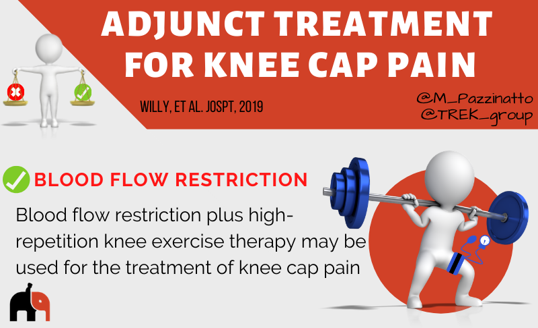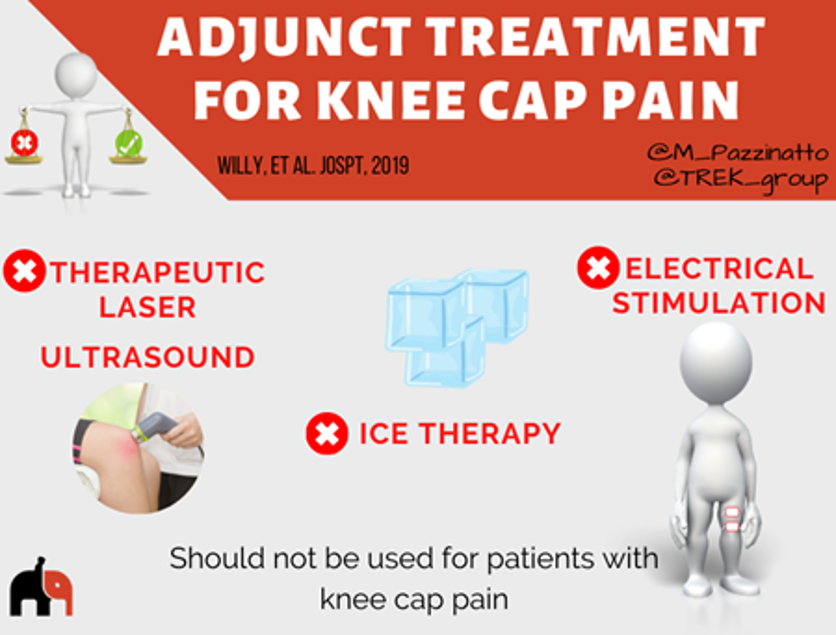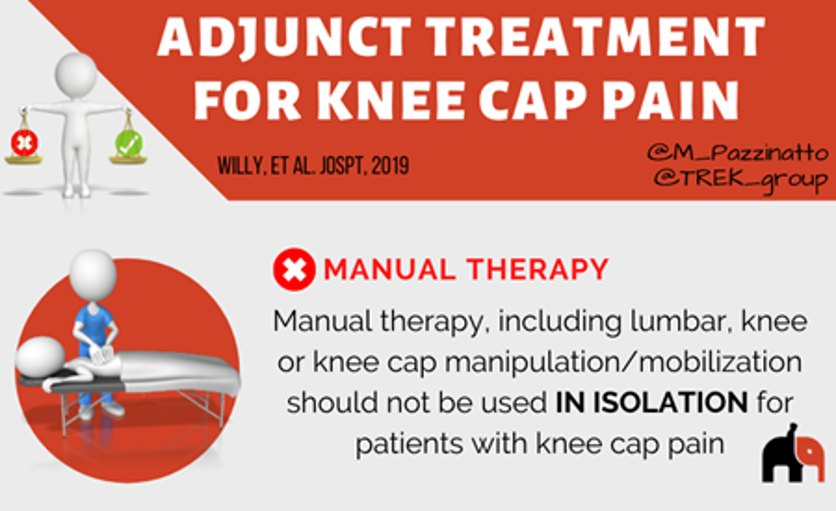In this section, you can find more information about adjunct treatments for knee cap pain
Blood flow restriction training involves exercise whilst using a pneumatic cuff to restrict blood flow, similar to a blood pressure cuff. The decreased oxygen to the muscle, in combination with reduced ability to get rid of waste products from the exercise (e.g. lactic acid), causes the muscle to work a lot harder than without occlusion.

For those with knee cap pain, this may mean that an appropriate workout can be achieved at a lower weight, reducing the pain that may be associated with resistance training.
An 8-week of blood flow restriction training may provide a low-load thigh muscles strengthening and reduction in pain with daily living activities.
There is a variety of therapeutic modalities of passive treatment:
Cryotherapy (ice therapy or cold therapy) is a technique where the body or one area of the body (e.g. knee) is exposed to extremely cold temperatures for several minutes. It can be administered in a number of ways, including through ice packs, ice massage, ice baths.
Laser therapy and therapeutic ultrasound are  popular modalities commonly used in physiotherapy clinics. Laser (Light Amplification by Stimulated Emission of Radiation) therapy is the application of red and infrared light over the injuries. And the therapeutic ultrasound consists in a small handheld probe placed on the problem area (e.g. knee) combined with gel or cream, which may be medicated or not. The probe vibrates, sending waves through the skin and into the body.
popular modalities commonly used in physiotherapy clinics. Laser (Light Amplification by Stimulated Emission of Radiation) therapy is the application of red and infrared light over the injuries. And the therapeutic ultrasound consists in a small handheld probe placed on the problem area (e.g. knee) combined with gel or cream, which may be medicated or not. The probe vibrates, sending waves through the skin and into the body.
Electrical stimulation also is a very popular modality used in physiotherapy clinics. Electrical stimulation is the use of electrical impulses to make the muscles contract or to provide pain relief. The electrodes attached to the skin deliver impulses that make the muscles contract.
Despite the fact that all of these modalities are commonly used in physiotherapy clinics, they are not recommended for the treatment of knee cap pain. They may offer some benefit If used in conjunction with exercise, but should not be used in isolation. In combined intervention studies, exercise therapy is always the consistent component between studies, so it is important that these modalities do not reduce the time available in sessions to provide appropriate exercise therapy.

Although manual therapy, including lumbar, knee, or knee cap manipulation/mobilization, has been used in combined interventions, its use may not improve outcomes, particularly when used in isolation, and thus is not recommended.
As exercise therapy is the consistent component in combined intervention studies, manual therapy should not reduce the time available to provide appropriate exercise therapy in patients with knee cap pain.
The two common forms of needling used in practice are:
Acupuncture (Eastern medicine) and Dry needling (Western medicine).
Acupuncture may help to reduce pain in people with knee cap pain. However, it has not been thoroughly tested in research trials. So again, it should not replace exercise as the main intervention.
Dry needling of the thigh muscle is not better than placebo and it does not add improvements in pain or physical function when combined with knee exercises. Thus, dry needling is not recommended for the treatment of people with knee cap pain.
